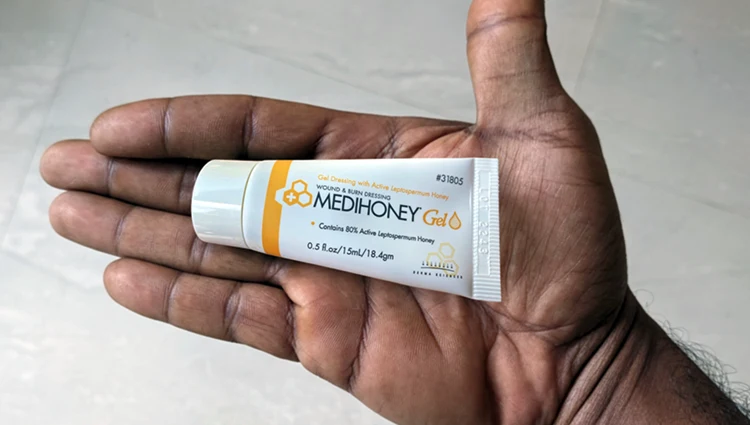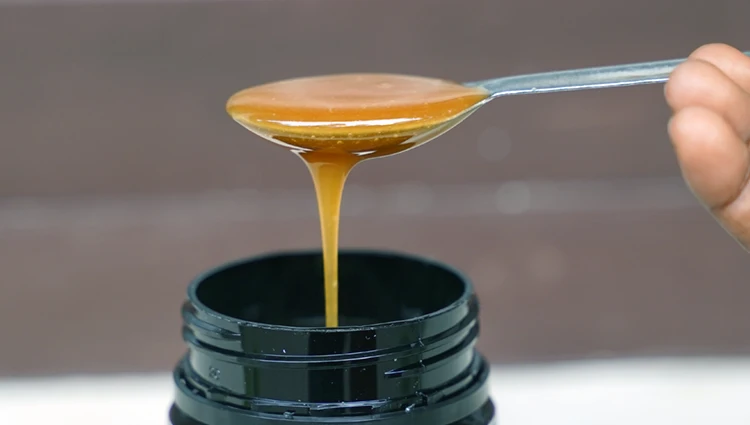
Honey has long been recognized for its medicinal properties, particularly in wound care, dating back to ancient times. However, with the rise of modern antibiotics, the use of honey as a treatment diminished. Now, as antibiotic resistance becomes an increasing concern, honey is once again gaining attention for its antibacterial properties, especially in the form of medical-grade honey. Among these, Manuka honey stands out for its potent healing capabilities. This blog will explore the role of Manuka honey and MediHoney in modern wound care, detailing their benefits, uses, and what you should consider when using them.
Comparison Table: MediHoney vs. Manuka Honey
| Feature | MediHoney | Manuka Honey |
|---|---|---|
| Type of Honey | Processed, medical-grade honey | Raw, unprocessed honey |
| Origin | Primarily from the Leptospermum species of plants | From the Manuka bush (Leptospermum scoparium) in New Zealand and Australia |
| Processing | Undergoes gamma irradiation to sterilize and lower pH | Typically not irradiated, may be minimally processed |
| Key Components | Glucose oxidase, methylglyoxal (MGO) | Methylglyoxal (MGO), dihydroxyacetone (DHA) |
| Antibacterial Activity | High, due to low pH and MGO content | High, due to MGO content |
| Wound Healing Properties | Promotes debridement, reduces inflammation, stimulates tissue growth | Antibacterial, anti-inflammatory, promotes wound healing |
| Uses | Burns, chronic wounds, diabetic ulcers | Minor wounds, burns, skin infections |
| Regulation | Regulated as a medical device by the FDA | Regulated as a food product |
The Unique Properties of Manuka Honey
Manuka honey, derived from the Leptospermum plant, is a type of honey known for its high antibacterial activity. Its key component, methylglyoxal (MGO), is believed to be responsible for much of this activity. MGO is formed from the precursor molecule dihydroxyacetone (DHA), found in the nectar of Leptospermum flowers. This, along with honey’s natural properties like low pH and high osmolarity, makes Manuka honey an exceptional choice for wound healing.

However, not all Manuka honey is created equal. The concentration of MGO can vary significantly between batches, making the effectiveness of each jar of Manuka honey somewhat unpredictable. Furthermore, Manuka honey is not regulated as strictly as medical-grade honey, which means its antibacterial potency can fluctuate. Despite this, Manuka honey remains a popular choice due to its natural origins and strong evidence supporting its therapeutic benefits.
The Development of Medical-Grade Honey
One of the challenges in using raw honey, including Manuka honey, for medical purposes is ensuring its purity and safety. Regular honey can contain contaminants, such as bacterial spores, herbicides, pesticides, or industrial pollutants, which make it unsuitable for direct application on wounds. Furthermore, raw honey is not sterile, which poses risks, especially for people with compromised immune systems.
To address these issues, medical-grade honey is carefully processed to meet high safety standards. It undergoes sterilization through methods like gamma irradiation, which eliminates harmful microorganisms without compromising the honey’s antibacterial properties. MediHoney, a brand of medical-grade Manuka honey, has been extensively studied and is now widely used in clinical settings.
MediHoney: A Leader in Wound Care
MediHoney, developed by Derma Sciences in partnership with Comvita, a major New Zealand honey supplier, is a medical-grade honey product that has been cleared by the U.S. Food and Drug Administration (FDA). This honey-based product is available in various formulations, including gels, pastes, and dressings, each designed to treat specific types of wounds.
Medihoney is versatile and can be used for a wide range of wounds, including:
- Diabetic foot ulcers
- Pressure ulcers (bed sores)
- First and second-degree burns
- Traumatic and surgical wounds
- Venous and arterial leg ulcers
Because Medihoney is produced under strict controls, it guarantees consistency and safety. It is filtered, sterilized, and tested for contaminants, making it much safer than raw honey for wound care, particularly for vulnerable patients, such as those with weakened immune systems. Its ability to maintain a moist wound environment, promote autolytic debridement (the body’s natural removal of dead tissue), and provide a barrier to bacterial contamination has made it a valuable tool in modern medicine.
Different Formulations of MediHoney
Medihoney products come in different forms to meet the needs of varying wound conditions. These include:
- Medihoney Gel: This formulation contains 80% active Manuka honey and 20% natural gelling agents, making it suitable for wounds with moderate drainage.
- Medihoney Paste: Made with 100% active Manuka honey, this paste is ideal for hard-to-dress wounds.
- Medihoney Calcium Alginate Dressings: These dressings are infused with active Manuka honey and are suitable for deeper wounds that need packing, such as pressure ulcers or diabetic foot ulcers.
The availability of these formulations makes Medihoney adaptable for different wound types, from minor cuts to more severe ulcers.

The Cautious Optimism of Honey-Based Treatments
Despite the promising results, it’s important to approach honey-based treatments with cautious optimism. Clinical evidence supports the use of Medihoney and other honey-based products for wound healing, especially in cases where traditional treatments have failed. For example, Dr. Robert Frykberg, a podiatrist at the Veterans Affairs Medical Center in Phoenix, observed that Medihoney worked effectively in about half of the diabetic foot ulcer cases he treated.
However, while Medihoney has been shown to improve wound healing, it is not a miracle cure. It is most effective in managing wound symptoms such as infection and inflammation but is not suitable once the infection has entered the bloodstream. Moreover, responses to honey treatments can vary from person to person, depending on factors such as the type of wound, the individual’s immune response, and the specific strain of bacteria involved.
The Importance of Sterile, Medical-Grade Honey
One of the biggest misconceptions about using honey for medical purposes is that any honey, including store-bought varieties, can be used for wound care. This is not only incorrect but potentially dangerous. Regular honey can contain spores of Clostridium botulinum, which, while harmless when consumed, can pose a risk when applied to open wounds. This is why experts strongly recommend using only sterilized, medical-grade honey for wounds.
Medihoney, which is ultra-filtrated and sterilized, is free of such contaminants, making it a safe option for wound care. Additionally, the traceability of Medihoney ensures that each batch meets the same high standards, providing users with a reliable and effective product.
Conclusion
The resurgence of honey as a treatment in modern medicine highlights its potential as a powerful tool in wound care. Manuka honey, in particular, with its antibacterial properties, has proven to be highly effective in treating various types of wounds. However, the importance of using medical-grade honey, like Medihoney, cannot be overstated.
Medihoney offers a safe, controlled, and effective alternative to raw honey for wound healing, backed by scientific research and clinical evidence. It provides a promising option, especially for those dealing with chronic or hard-to-heal wounds. As always, though, it’s important to consult with a healthcare provider before starting any new treatment to ensure it’s the right option for your specific condition.
In summary, while honey-based wound care is not a miracle treatment, products like Medihoney provide a natural, science-backed solution for many people dealing with wounds, offering hope and healing where conventional treatments may fall short.
